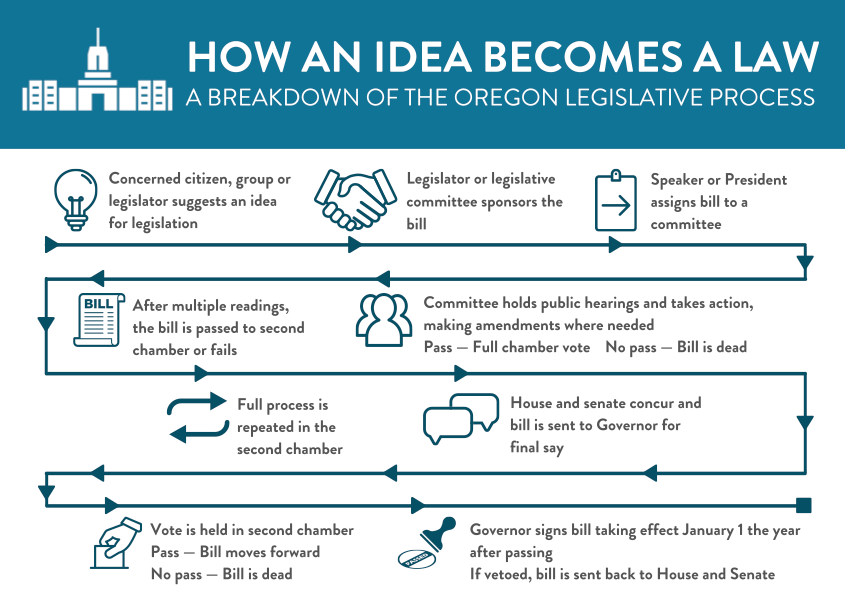
On Monday, January 11, recently elected legislators were sworn into office, marking the official start of Oregon’s 81st Legislative Assembly. Much of the session will occur online, with the Capitol building closed to the public. Yet the process of creating new laws or repealing old ones remains mostly unchanged.
It all starts with an idea. Some are new, while others are based on current laws that may not work well. These ideas can come from everywhere: average Oregonians, small businesses, nonprofit organizations, local governments, state agencies or any other person or organization one can imagine.
They must make contact with a State Senator, State Representative or legislative committee (such as the Senate Committee on Education or the House Committee on Health Care) in order to introduce their idea.
A group of lawyers called Legislative Counsel is hired by the Oregon Legislature to turn ideas into bills. A bill is just an idea for a law written in legal terms. Oregon Revised Statutes (often abbreviated ORS) is the collective name for all of Oregon’s laws.
To become law, a bill is introduced in either the House of Representatives or the Senate. If it starts in the House, it receives a House Bill number. For instance, House Bill 2699 (HB 2699) is one of Oregon Right to Life’s bills this session. Oppositely, if it begins in the Senate, it then receives a Senate Bill number (abbreviated with SB, followed by its number). The number is an easy way to track a bill through the legislative process.
Each chamber has a presiding officer who dictates much of what happens. Their titles are President of the Senate and Speaker of the House. They decide how many committees there are, what topics these committees work on, which legislators serve on the committees and which bills they tackle. Because HB 2699 deals with providing medical care to babies who survive abortions, it was sent to the House Committee on Health Care.
From there, a committee can have a public hearing on the bill to get feedback from Oregonians, amend the bill to change what it says and then decide if it deserves a vote in the entire chamber or that it should not pass.
A bill moving from the committee to the floor can then receive an up or down vote from all legislators in the chamber. Most bills need 31 votes to pass the House and 16 votes to pass the Senate. A bill that passes the House must do the entire process again in the Senate, and vice versa for a bill that passed the Senate first.
If a bill passes the House and Senate, it goes to the Governor’s desk. The Governor can either sign it into law or veto it and send it back. Most bills become law on January 1 of the next year.As pro-life advocates, we can be much more effective with even a basic working knowledge of the legislative process. Oregon Right to Life hopes this primer serves as a foundation that will assist you in advocating for pro-life bills in 2021.




